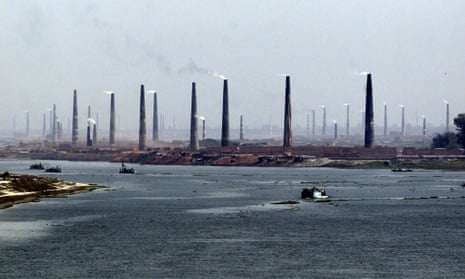The offer by rich countries to provide “climate finance” to poorer countries to help them adapt to climate change and reduce their own emissions was a key part of the hard-negotiated, ill-fated climate summit in Copenhagen in 2009 and was confirmed in Cancún a year later.
The promise was that such finance would be “new and additional”, but there was no agreement as to what that meant. Even more confusing, initially the offer was drafted as a pledge of public money (similar to development aid), but the word “public” was subsequently removed, leaving the door open for private finance to reach the $100bn (£64bn) annual commitment (from 2020).
Observers of international negotiations will find this a perfect example of deliberate ambiguity, sufficient to keep struggling negotiations on course. Everyone could eventually sign up to this pledge. The intended recipients of the cash were satisfied with the spirit of what was on offer, while the rich country negotiators held to its letter, knowing that in reality they weren’t signing up to anything at all.
The concept of additionality has inspired a mini research industry, but little clarity. In the end, the only sensible interpretation of the concept is that it means additional to development aid that is already being offered, ie that countries would not reduce aid in order to meet climate finance commitments.
In fact, thought, climate finance fits the OECD’s criteria for aid and it is almost always counted as such. It is not additional to anything – even less so if we remember that the pledge to reach 0.7% of GDP in aid donations has been met by only a handful of countries.
To be fair, in an era of austerity, the idea that donor countries will ramp up ODA according to their 0.7% commitments and spend additional amounts on climate finance is optimistic to say the least. Those countries that have reached the 0.7% target, like the UK, are hardly going to turn to their electorates now and ask for more, however urgent the need.
That is why the loophole provided by the deletion of the word “public” is now so important. Despite insistence by prominent academic authorities and developing countries that the money should not only be public but mostly in grant form (to avoid further burdening poor countries with debt), this is not being taken seriously by donors.
But logic is on the side of the developing countries. No one doubts the importance of incentivising and directing private finance to support climate compatibility – the problem is counting it. The best estimates suggest that new and additional private finance for mitigation and adaptation is already up to four times higher than the $100bn 2020. This cannot be what the negotiators had in mind in Copenhagen. Some argue that we should count the private finance that public finance has “leveraged”, but this is proving chimerical.
This issue is one that could undermine the trust of developing countries in the climate negotiations, and indeed in finance negotiations more broadly.
Two things are needed to avoid a climate finance car crash.
First, governments need to address this issue as soon as possible. If it is discussed openly in the earlier part of this year, perhaps as part of the financing for development discussions just getting underway, we might be in a position to come up with positive solutions come the UN climate summit in Paris in December. If we leave it until then, however, the acrimony that might ensue has the potential to derail the talks.
Second, the world should focus less on the overall amount of climate finance and more on what makes it special – quality not just quantity. Unlike aid, which is considered a charitable donation, climate finance emerges from a quasi-legal contract between countries (hard to hold to account, yes, but as binding as you can get at the UN) and that has implications for how it is spent.
Instead of the high-handed donor management we are used to seeing in the aid world, climate finance should be governed by multilateral organisations that represent recipients as much as donors. That is why countries like India eschew the offer of aid (a gift, offered with heavy conditionality) but are willing to accept the idea of climate finance (a right, over which they have more control).
The promise of “new and additional” climate finance at Copenhagen and Cancun was something of a sham. But it is not too late to make it right if we stop trying to chase the wild goose of additionality, and focus on making it a new way to do development finance.
